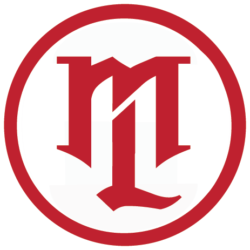What Is A Muscle Strain?
Have you ever felt like you pulled a muscle and wondered what the heck just happened? Well, it was most likely a muscle strain. A muscle strain is the over stretching or tearing of muscle fibers. They are classified in three different grades of severity. A Grade I strain is a mild strain where only a few muscle fibers are damaged. Grade I strains most likely will feel tender and painful, but the muscle will still have normal strength.
A Grade II muscle strain is a little worse and there usually is a loss of strength. You would be able to tell if the injury was a Grade II strain if there was swelling or a bruise on the area that’s hurt.
A Grade III muscle strain is the absolute worse. This is when the muscles tears all the way through. When this happens you feel a “pop” sensation as the muscle rips away from the tendon. These type of injuries require immediate medical attention because there is usually a loss of muscle function. The Grade III muscle strain usually causes the muscle to look deformed where there is a “dent” in the muscle where the muscle fibers have detached from the tendon.
How To Heal Muscle Strains
Grade I and Grade II muscle strains can be treated with the R.I.C.E. healing method. R.I.C.E. stands for rest, ice, compression, and elevation. Rest is very important because most muscle strains are caused by over working or over stretching the muscle. Your body is telling you to “chill out!”. While resting you should be applying ice to the injured area frequently.
Ice will help the inflammation and swelling go down. I personally recommend icing for about 20 minutes every few hours. Compression is also necessary to reduce the swelling. Keep it wrapped up with compression clothing or sleeves (you could even use an ACE bandage). You want the compression to be tight but not too tight to the point where you aren’t getting blood circulation to the area.
Lastly, it is important to keep in mind that the injured area should be elevated above the heart. This will keep the swelling down. It is pretty evident that the overall goal for allowing the muscle to heal is by reducing inflammation and swelling. This can all be done at home, but keep in mind this is only for Grade I and Grade II muscle strains. As mentioned before, Grade III muscle strains require immediate medical attention. Depending on the severity of the injury surgery may be needed. The length of recovery depends on the individual and the grade of muscle strain.
Conclusion
Muscle strains are caused by over stretching or over working a muscle. There are three different grades of muscle strains. Grade I and Grade II muscle strains can be healed at home with the R.I.C.E. method of healing. It is recommended that Grade III muscle strains receive immediate medical attention.
Resources
- https://www.healthline.com/health/strains
- https://www.health.harvard.edu/a_to_z/muscle-strain-a-to-z



